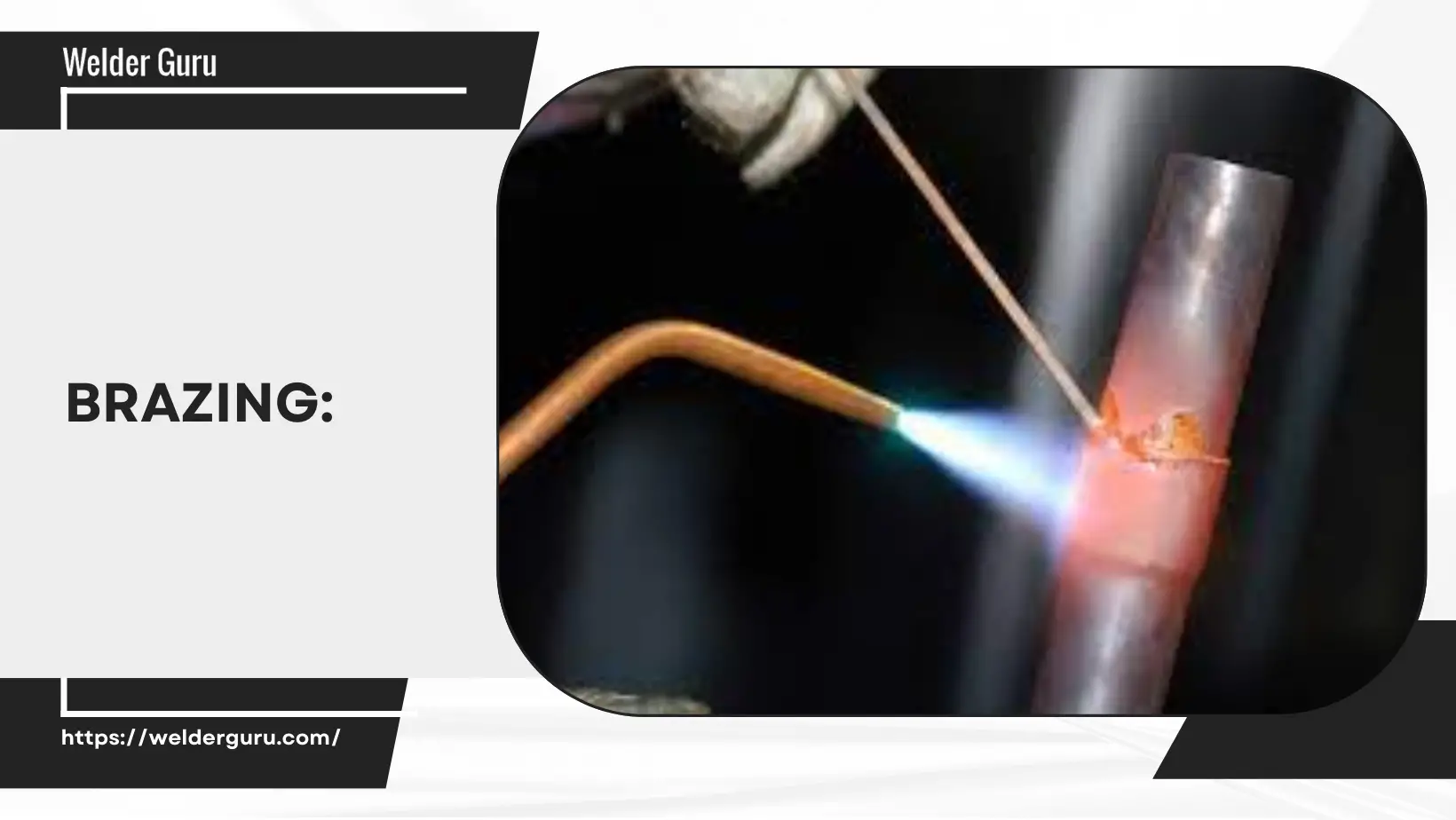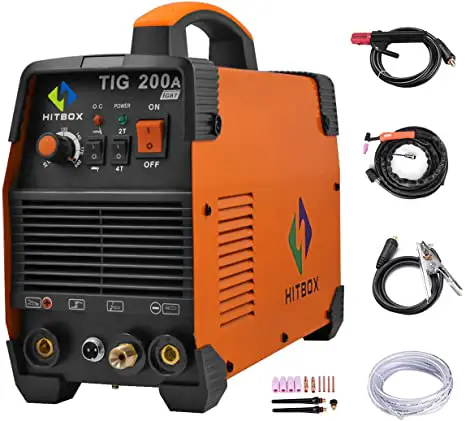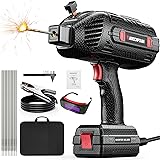JOUNJIP Plastic Welding Kit Deluxe -UL Certified Plastic Welder 80W Iron- Professional Grade Plastic Repair Kit for Automotive Car Bumper, Kayak, Tank Repair
30% OffFor the betterment and establishment of some tools, we always require some techniques to manage all work. It should be capable of making things with fine details and great uniqueness so can provide us with the best neat work. Welding, soldering, and brazing are all techniques to maintain the beauty of the material and connect the aluminum and iron sheets having some dysfunctional areas. Below, we will discuss the characteristics of the three mentioned above.
Read Recent Post: Welding without mask
Welding:

Welding is the process of joining two or more torn-out processes of metal iron or aluminum by heating the surface of the detachment and then hammering and pressing it to form a harmonious and effective hoof material making the unit again. For this work, a professional welder is required to make everything up to date.
Characteristics of a welder:
- Should know work.
- Should be efficient at handling welding tools.
- Should be kept functional knowledge of machinery.
- Should be maintaining the focus on minute details.
- Use eye protection glasses.
- Should have a detailed provision of the affected area for making a clear and all-good unit after his work.
Have you ever thought, are welders not at high risk of sight damage due to blazing torches of fire coming out?
Yes, if they don’t use protective glasses established only for those with high quality much more efficient for protecting rays going in their eyes, they will be at higher risk of vision loss.
Soldering:

It is the process of joining metal pieces together by applying the low melting point alloy (solder) at the juncture for making the electrical and mechanical bond. When the solder solidifies it provides support to the metal connection.
Characteristics of solder:
- Provide adherence to the joining surface.
- Is a low-melting alloy to, provides attachment to the affected area.
- Can make electrical connections with the printed circuit board (PCB).
- Provides support in such a way that we can easily detach when we want to remove the bonding.
- Forms the metallurgical bond by intermetallic development and interfusion of it by parent material.
Brazing:

It is the technique of joining two metal surfaces by melting the surface and filling the gap with the material which has a comparatively low melting point than the parent material which has to be joined. The filler material will always be an alloy providing better support than solder and is less functional than welding.
What is the best technique to use among all if each of them has its characteristics?
For its answer let us make a table to evaluate which is the more competent and easily handled technique.
Read More Entry: Good & Cheap Stick Welder
The difference between the three procedures:
Sr |
WELDING |
SOLDERING |
BRAZING |
|---|---|---|---|
| 1 | A Temperature of above 450C is required. | A temperature of below 450C is required | Moderate temperature is required. |
| 2. | Plasma is used for attachment | Solder as any metal alloy is used for securing the stitch | The Metal alloy is used for joining surfaces |
| 3. | It can not be deformed. | It can easily be deformed. | Some strong force is required to deform the stitch. |
| 4. | Strains don’t remain in the case of welding. | It is very common to find a strain in this case. | Usually, strains don’t occur. |
| 5. | Heat treatment is required in welding. | No heat treatment is required. | No heat treatment is required after brazing. |
| 6. | It can change the mechanical properties of the parent material. | Don’t change the mechanical properties of the material. | Can change both the mechanical and electrical properties of metal. |
| 7. | Workpieces are heated up to their melting point to be joined. | No need to, heat the parent material of securing the stitch. | Heating may sometimes be required. |
| 8. | It Provides the strongest bond between the metal surfaces. | It provides the least stable bond and can easily be detached. | It Provides a moderate bond between the two. |
As the characteristics of every procedure are mentioned above, each one of them has its unique properties and can be used with the better application by welders’ capacity of maintaining the harmonious whole of the material attached. But for some specified reasons welding is the most attempted way.
As mentioned above, the best way of connecting the two metal surfaces is by welding them to their specified and unique properties from others. As it requires very less time and provides the strongest bond between the parenting material and is easily attained by maintaining a specific temperature.
Why is welding most frequently used?
People often ask why is welding most frequently used. The reason for it is, welding can is feasible and cheaper than soldering and blazing. The welder can weld the stitch by attaining certified heat and using some of their personally attained skills to maintain the properties of welded material.
Tricks and tips for doing better attachments:
- Always ensure that surface is smooth and dry.
- Maintain the eye angle leveled to the welding spot.
- Don’t move your head too frequently while applying the torch.
- Drag your welding material away from your body so rays don’t reach you.
- Speed should be maintained slow.
- The welding surface should be cleaned so no dust particle traps in the edge are welded.
- Use high-quality soldering tools for more efficient and easy use.
- The alloy used for soldering and brazing should be pure and provides more support to the welding arch.
- Appropriate heat should be applied.
- No pressure is to be applied to the welded side just after the procedure.
Frequently ask questions :
Which is the best technique to be followed?
And of course, having all their unique characteristics, if we want a permanent stitch then we should go for welding, and if the stitch is to be removed or molded after some time goes for soldering. Brazing can also be used as it is between the two.
CONCLUSION:
Although all the above-mentioned categories are good and unique in their ways, each has specified characteristics having a better adaptation to everyday feasible life. Everyone has his ease and can use various techniques to get rid of such default pieces making the world an astonishing place to live for. Metal joining is never too easy and can be able to take the vision of one person due to such torching heat and blazing light coming out when doing welding. Soldering and brazing are also the assistant’s way of welding helping the user to attain something which is not possible in one
Read More: Best Stick Welder For Home Use
Related Links:
- https://www.wikihow.com/Braze-Aluminum (By Wikihow) (October 25, 2022 )
- https://www.wikihow.com/Solder (By Wikihow) (April 30, 2021 )
- https://www.wikihow.com/Solder-Aluminum (By Wikihow) (April 13, 2020 )
- https://www.wikihow.com/Solder-Gold (By Wikihow) (May 7, 2021 )
- https://www.wikihow.com/Solder-Wires-Together (By Wikihow) (October 16, 2022 )
- https://en.wikipedia.org/wiki/Brazing (By Wikipedia)
- https://en.wikipedia.org/wiki/Soldering (By Wikipedia)
- https://en.wikipedia.org/wiki/Category:Brazing_and_soldering (By Wikipedia)
- https://en.wikipedia.org/wiki/Soldering_iron (By Wikipedia)
- https://en.wikipedia.org/wiki/Talk%3ABrazing(By Wikipedia)















